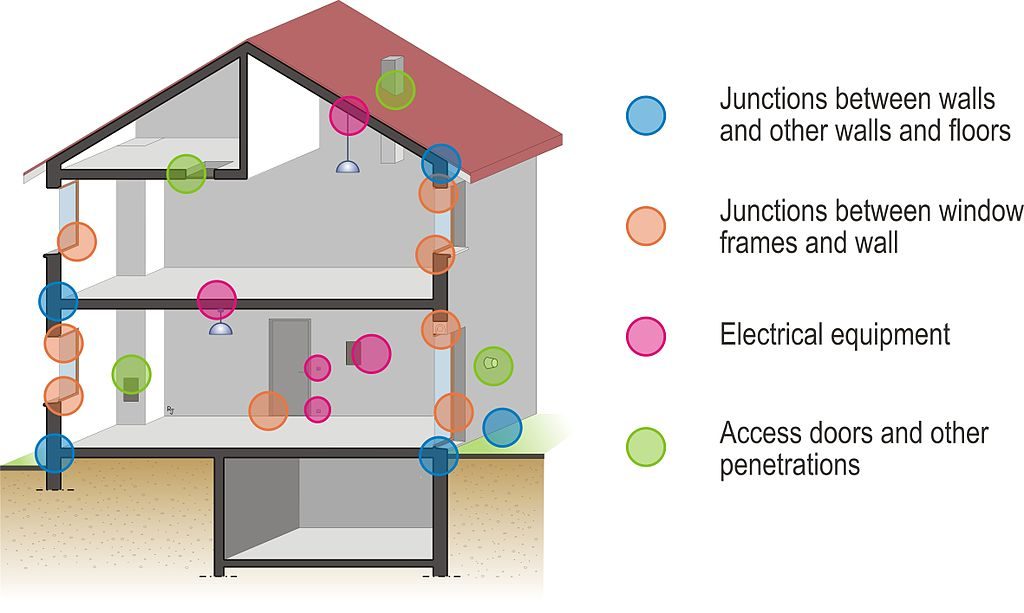Most Common Sources for Air Leakage
Air leakage leads to excessive energy bills. Detecting the most common sources for air leakage will help you identify the best way to cut your energy costs. There are areas that are easily spotted such as a draft coming from beneath your door or a window. It’s the less-obvious spots that can accumulate and empty your pockets.
A couple rules-of-thumb:
- The “stack effect” is when hot air rises, and cold air replaces it. Applying this to your home, means that you need to ensure that hot air isn’t escaping through the top of your house (e.g. attic), and cold air can’t replace it from the bottom (e.g. basement).
- Any spot where two building materials meet—corners, where the brick meets concrete, chimneys, etc.—is likely to leak air. A trick of the trade is to look for spots where spider webs build up; bugs like to live where air flows.

There’s no need for shivering in your house during the winter; keep the heat inside and let the cold stay outdoors. Here are some of the most common sources for air leakage in Texas homes:
Attic Hatches
While your attic may store the holiday decorations well, it may be letting the cold air into your cozy home. Remember, hot air rises. So, insulating the upper regions of your home is imperative.
Electrical Outlets
The very thing you plug a heating blanket into may be part of the reason you need that blanket in the first place. For that matter, any holes in your walls have the capability of letting air in or out of your house.
Dryer Vent
The vent does its job of letting hot air flow outward, but when it’s not in use, it may be letting the cold air in. It may be worth checking that area for cold spots.
Recessed Light
Aesthetically pleasing? Yes. Energy efficient? Probably not. Because the wall is thinner behind the lights and there’s a small gap between the structure the fixture, it can allow more air leakage.
Weather Stripping
Weather stripping is composed of rubber slips placed at the bottom of doors and the edges windows. Ideally, they’re airtight to avoid cold or hot air from entering, but if they’re improperly installed or have been around for too long, they may not be as effective as they should.
These are just a few of the many places that are driving up your energy bill. While these are the most common sources of air leakage, there are numerous other problem areas to consider. It can be tricky to figure out where the air is finding its entrance. So, contact us the Garland Insulating team. Insulation is our job, so let us find where the air is slipping into your home.